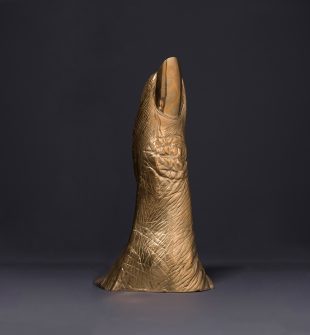Galerie Beaubourg, Paris
Private collection, since 1980
Paris, Galerie Beaubourg, Foire international de l’art contemporain (FIAC), October 1980
Andros, Museum of Contemporary Art-Basil and Elise Goulandris Foundation, Glancing at the Century, 28 June – 20 September 1998, pp. 129-131, ill. p. 131
Bernard-Henri Lévy, César: Les Bronzes, Paris, La Différence-Galerie Beaubourg, Paris, 1991, p. 20, ill.
The Chair, carried out in 1980, successfully combines two practices that César was highly knowledgeable about: working with objects he collected from the streets, mainly scrap metal, and expansions. The first one, a legacy of his early tough times, was for him a way to show that sculpture can be renewed and enriched by integrating elements other than traditional materials. The second practice, with which he had already begun experimenting from 1967, praises the ease offered by synthetic materials, the lightness and flexibility of which allow to give shape to any form with extraordinary ease. In particular, César used polyurethane, which has the property, when whipped, to create a foam with a volume much greater than that of the initial liquid, perfectly taking the shape of the mould into which it is poured and drying in a few minutes.
Attempting to harness the material and achieve the desired result, César created expansions in many variations, by differentiating sizes from the smallest to the largest, and experimenting with new materials: precious metals for jewellery, crystal, glass. He also decided to cast some polyurethane models in bronze, giving the metal a variety of colours, and integrated expansions into works that combine other materials, especially everyday objects.
César’s idea to match an expansion with a chair dates back to 1968, however he was given the opportunity to implement it a decade later. The originality of this Chair lies in the complete deviation of the materials from their typical use. Looking from afar, the viewer believes that this is an ordinary wooden chair, covered with some precious metal. As the viewer approaches, they discover that the wood is actually iron and the precious metal is bronze. Once again, César plays with the apparent aspect of the material just like with the functionality of the objects. Not only is this chair impossible to be used as such, but also it acquires a surprising importance and eventually becomes a valuable object.
.
.








